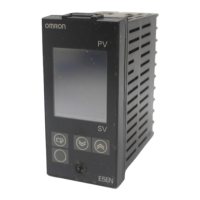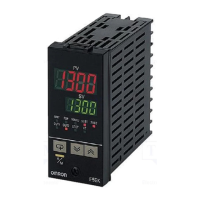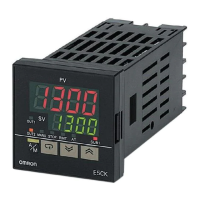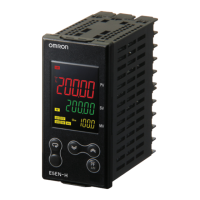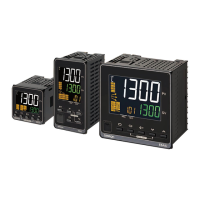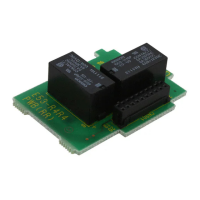4.6 Selecting the control mode
4-13
Settings Required
for Basic Control
4.6 Selecting the control mode
The control mode allows various types of control to performed.
The control mode is initially set to standard control.
● Standard control • Performs standard heating or cooling control. The "Direct/reverse
operation" setting is used to select heating (reverse action) or
cooling (direct action).
• When using PID control, the "Proportional band (P)", "Integral time
(I)", and "Derivative time "(D)" settings must be configured.
These PID constants can be set using AT (Auto-tuning) or manually.
• When the proportional band (P) is set to 0.00%, control becomes
ON/OFF control.
● Heating/cooling
control
• Performs heating and cooling control
• When using PID control, in addition to the "Proportional band (P)",
"Integral time (I)", and "Derivative time "(D)" settings, the "Cooling
coefficient" and "Dead band" settings must be configured.
The PID constants can be set using AT (Auto-tuning) or manually, while
the "Cooling coefficient" and "Dead band" must be set manually.
• When the proportional band (P) is set to 0.00%, control becomes
ON/OFF control and 3-position control is possible.
The following control modes can only be selected on 2-input types.
● Standard control
with remote SP
• An external DC current or voltage signal is input into the remote SP
input (input 2), and standard control is performed using the remote
SP input as the SP.
• Input 2 can be used within the permitted setting range determined
by the input 2 type.
● Heating/cooling
control with remote
SP
• An external DC current or voltage signal is input into the remote SP
input (input 2), and heating/cooling control is performed using the
remote SP input as the SP.
• Input 2 can be used within the permitted setting range determined
by the input 2 type.
● Ratio control • Ratio control is used to maintain a set proportional relationship
between two variables.
● Cascade standard
control
• Cascade control is performed using standard control.
• Input 1 is for the primary loop (ch1) and input 2 is for the secondary
loop (ch2).
● Cascade heating/
cooling control
• Cascade control is performed using heating/cooling control.
• Input 1 is for the primary loop (ch1) and input 2 is for the secondary
loop (ch2).

